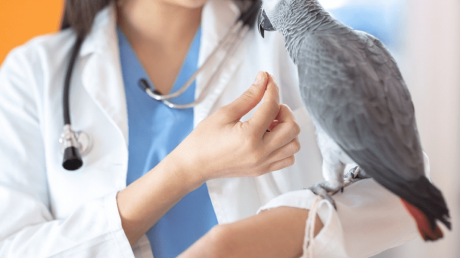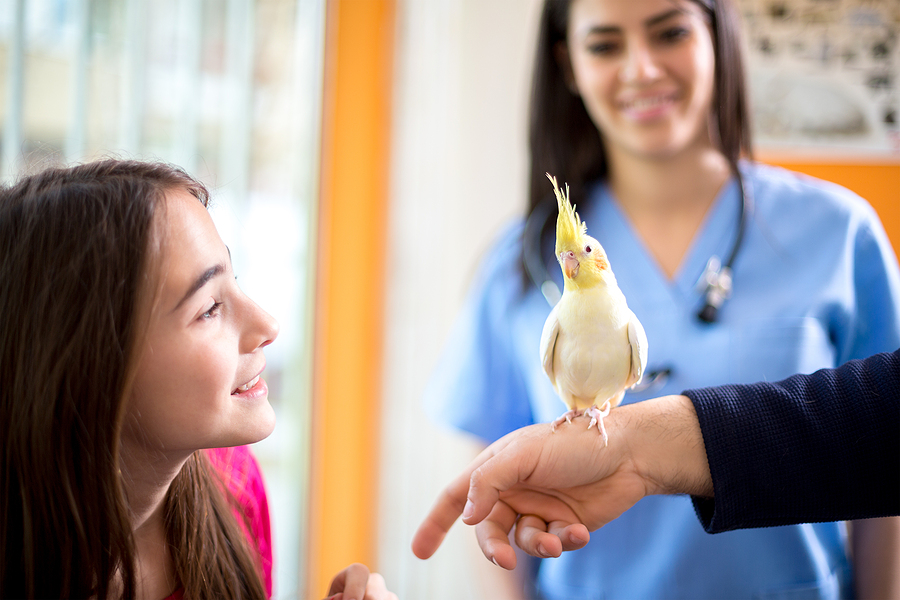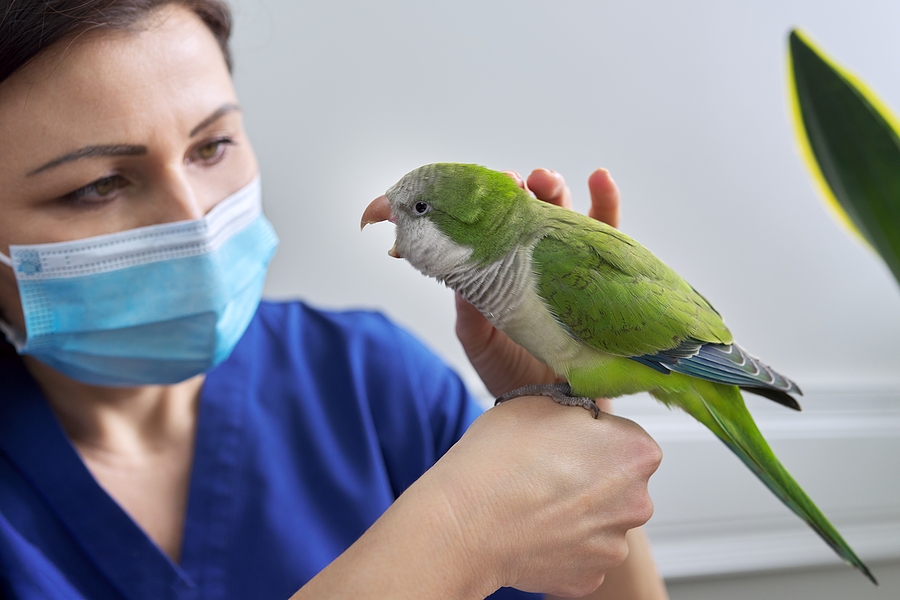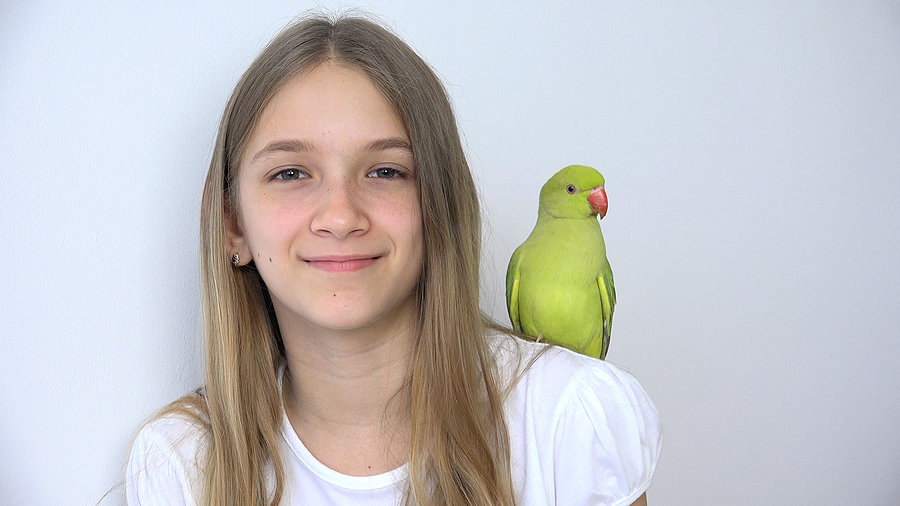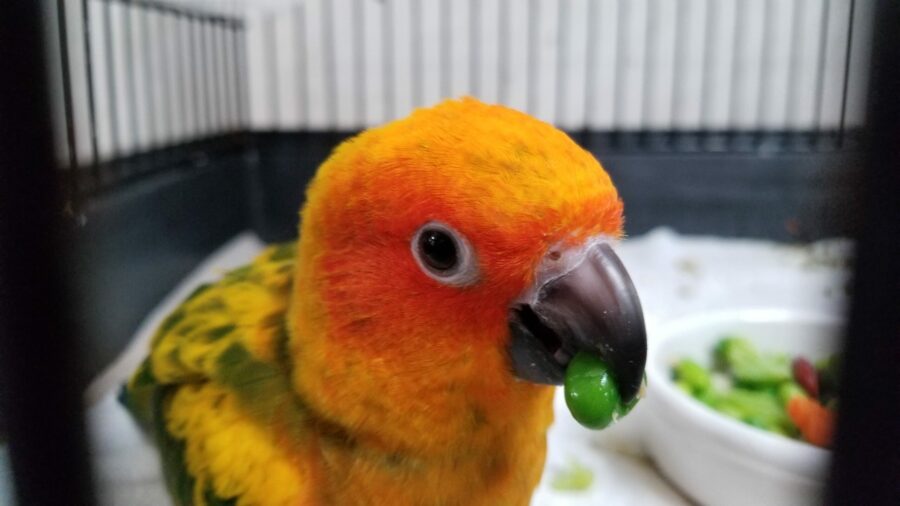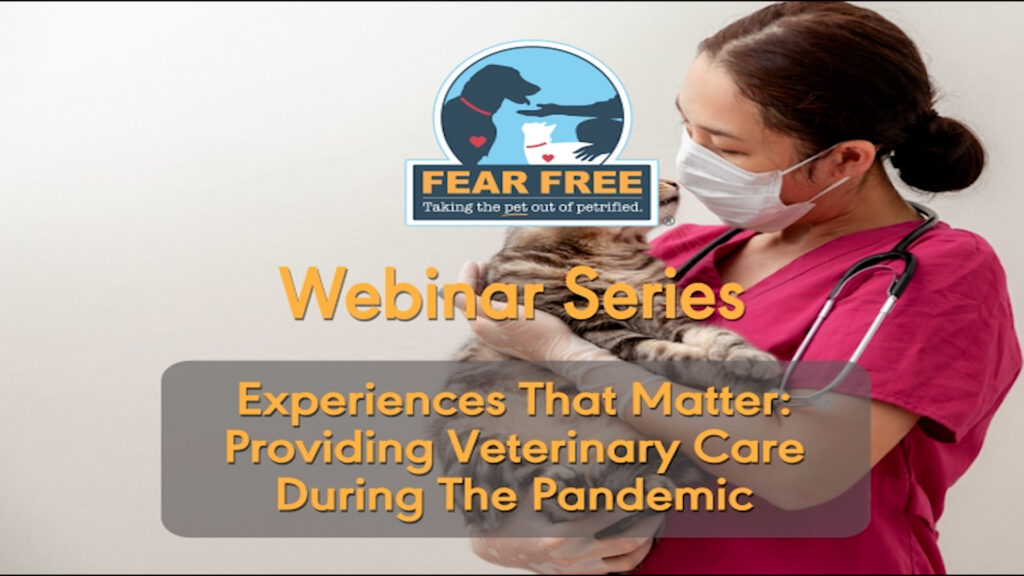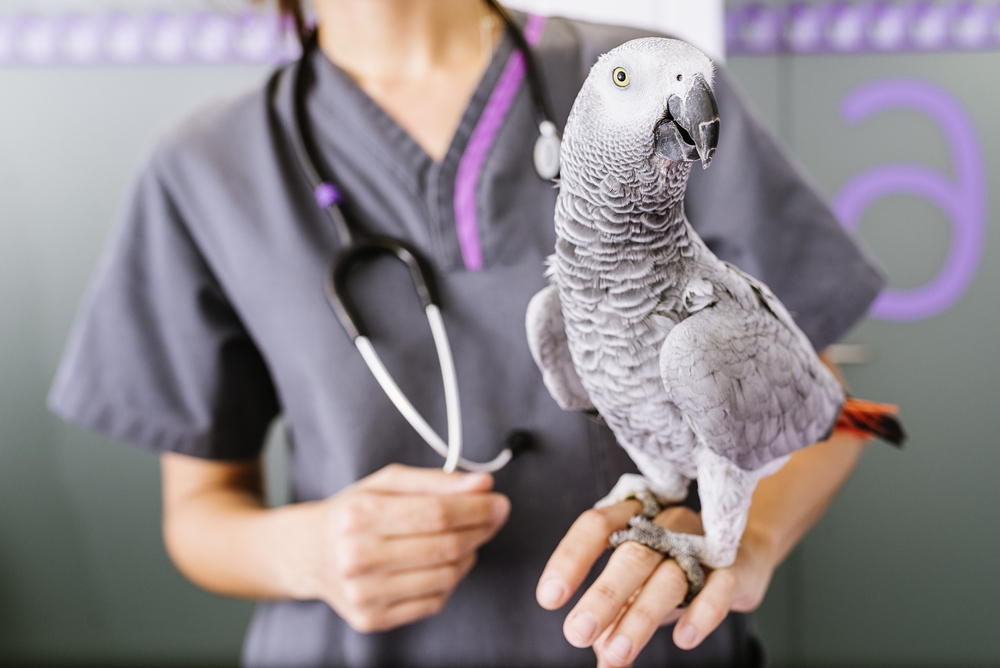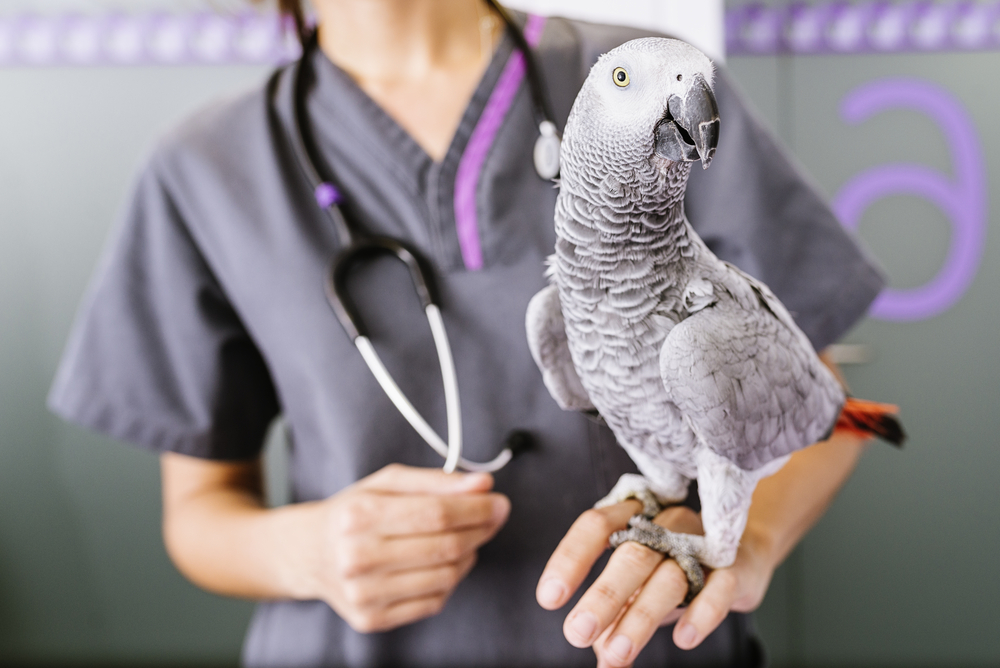
Unlike a dog or cat that may respond to a new person right away, birds can sometimes require a little extra effort on our part, especially if this is their first visit to your facility.
Birds can often show escape and avoidance behaviors when meeting a stranger. Here are some things you can do to help them to be more comfortable when you are getting to know them in a clinic setting.
- Give the bird space: Although it is tempting, try not to go right up to a bird. Give him some time to get used to you being in the same room. Once he is looking relaxed and comfortable you can move a bit closer.
- Speak softly: Many parrots respond to our loud voices by getting louder. Parrots can go from calm to highly aroused when we get animated, which can create conditions in which aggressive behavior is more likely to occur.
- Move slowly: Birds tend to show fear responses when people move too quickly. You don’t want to scare your soon-to-be new friend.
- Approach from the front: Be sure to approach the parrot so that he can easily see you coming. Many birds don’t like it when someone is moving behind them.
- Show him something special: Before walking closer to a parrot, it is a good idea to have some preferred food items, small parrot toys, or other desired item with you. Ask the client what the bird likes best. Show the bird what you have to give him before you get too close.
- Watch his body language: When you show the parrot the special treat or item you have for him, watch how he responds. If he leans toward you, he is saying he would very much like to accept your gift. If he leans away, he might be saying he is not sure he is ready to make friends right now. If he is not ready, you can always try again later.
- Offer the special item: If the parrot leans forward and reaches his beak toward what you have to offer, you can move closer and give him what you have. Whenever you offer a preferred food item or toy to a parrot for the first time, try to present it so the bird has to lean forward to take it with his beak. This way you don’t have to get too close to the bird’s beak, and you can be extra-sure the bird is ready for the item. Sometimes when we get too close or offer the item too fast, a bird might respond by biting.
- Offer more items: If the parrot takes the first food item or toy and is receptive, he might look or lean toward you for another one. If he does, that is an invitation to really start getting to know each other. Continue to offer him the desired items. This will cause your new parrot friend to look forward to seeing you.
Once a parrot understands that desired interactions occur in your presence, you will begin to notice more affiliative responses. He might be eager to step onto your hand. He might even talk or sing to see if he can encourage you to come closer to gain desired outcomes. As the bird’s comfort increases, he might even let you stroke the feathers on his head. This can be a good sign that you were very careful not to evoke fear responses and have done a good job building desired engagement.
Making friends with a parrot sometimes takes a little extra effort. But it is a very special compliment when a parrot accepts you as a friend. Pay close attention to your actions when you are meeting a parrot for the first time, and offer him preferred food items and fun toys. To learn more about interacting with, caring for, and managing parrots, seek out the Fear Free Veterinary Certification Program-Avian, which includes how to recognize stress in birds, how to handle and examine them safely, and how to teach cooperative care behaviors.
This article was reviewed/edited by board-certified veterinary behaviorist Dr. Kenneth Martin and/or veterinary technician specialist in behavior Debbie Martin, LVT.

